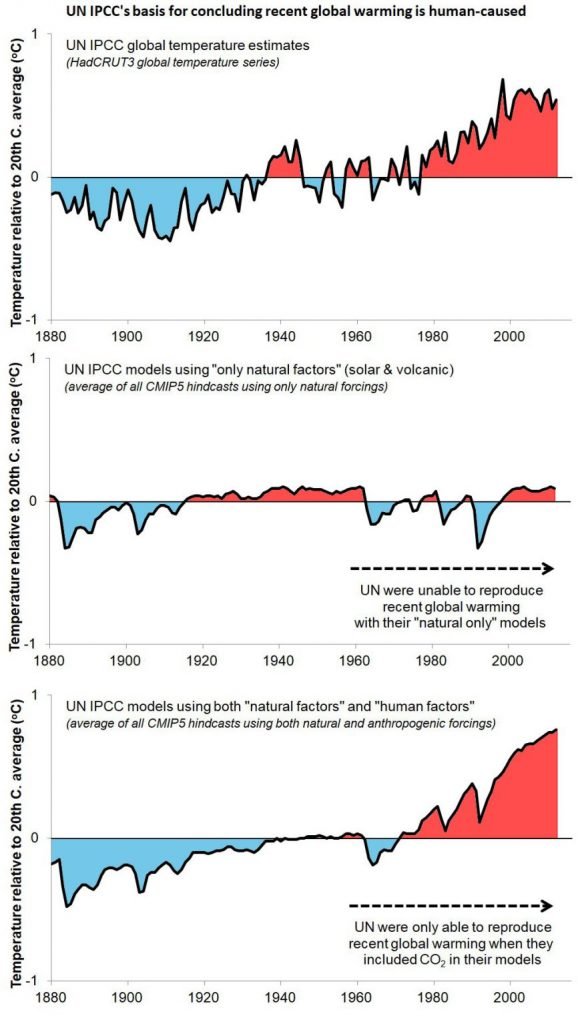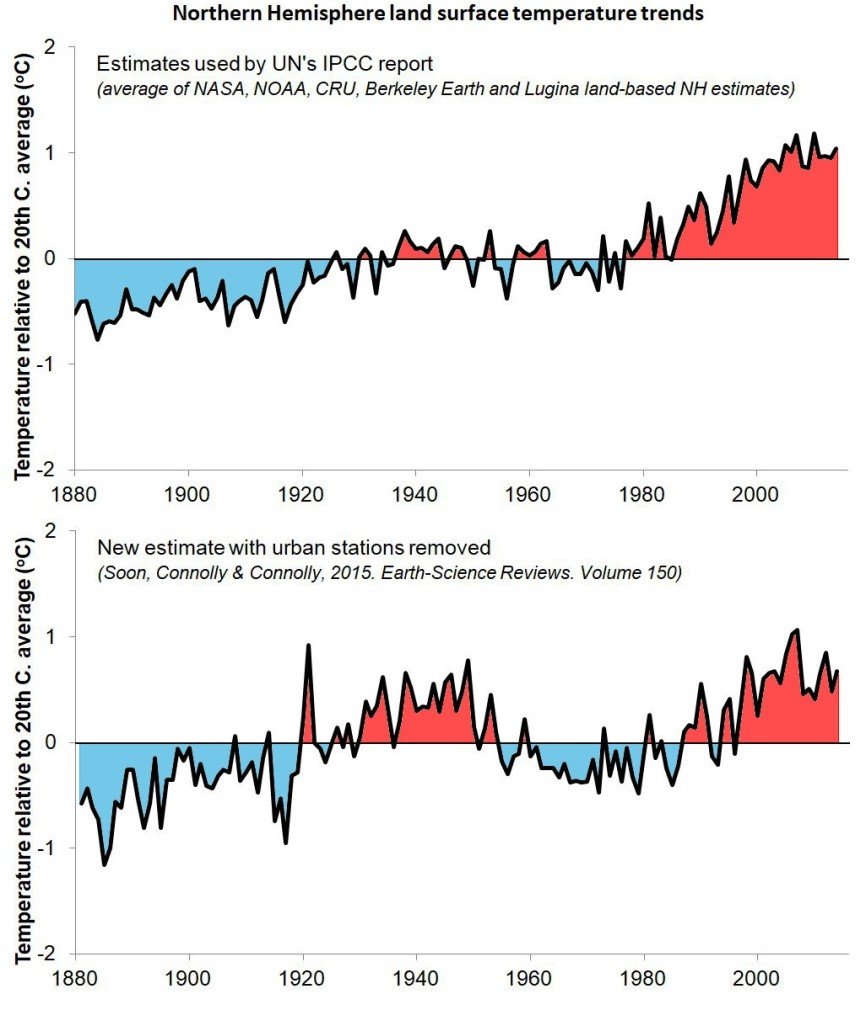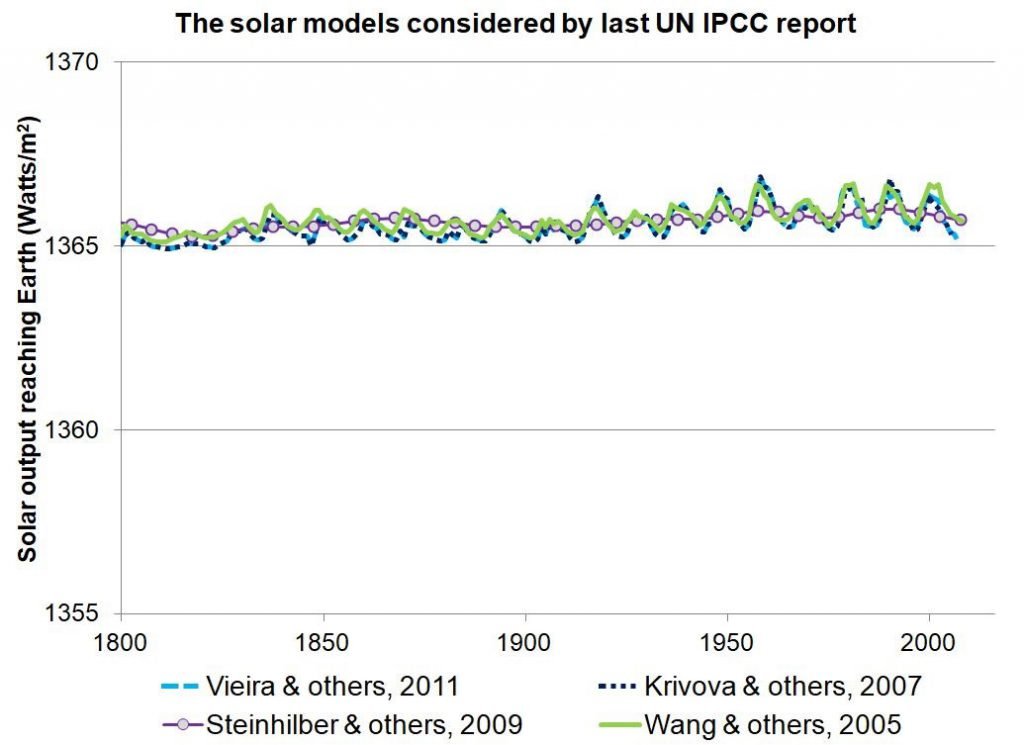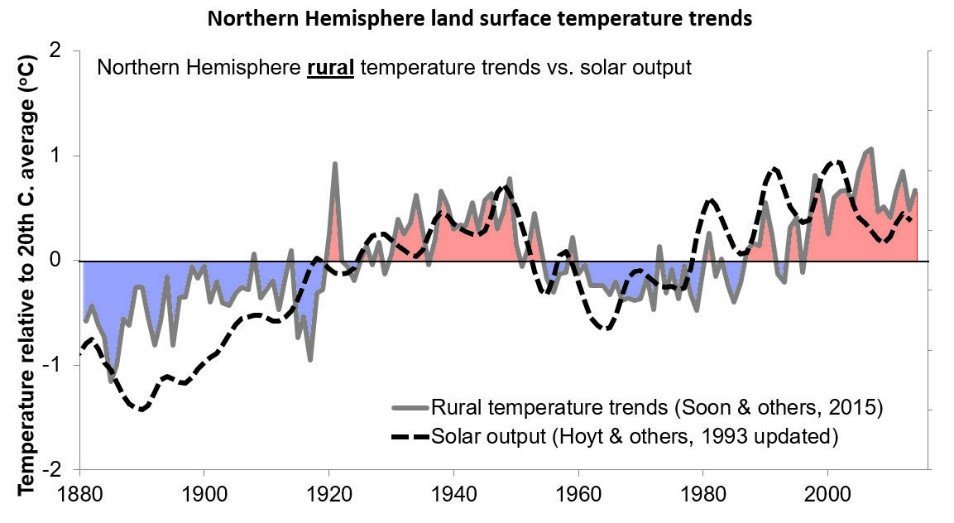This post is adapted from a similar post from 2019 on the CERES-science website – link here.
Summary
In this post, we briefly summarise some of the main findings of our 2015 paper with Dr. Willie Soon, “Re-evaluating the role of solar variability on Northern Hemisphere temperature trends since the 19th century”, that was published in the journal, Earth-Science Reviews. Link to pre-print pdf.
The UN’s approach to the climate change “attribution” problem
In their 5th Assessment Report, the UN’s Intergovernmental Panel on Climate Change (UN IPCC) concluded that most of the global warming since at least the 1950s was “extremely likely” to be due to human activity – specifically our carbon dioxide (CO2) emissions and other greenhouse gases. The main reason why they concluded this was fairly straightforward:
- When they ran computer models using their models for natural factors – i.e., changes in solar output and temporary cooling from volcanic eruptions – they were unable to simulate (or “hindcast”) the observed global warming since the 1950s.
- But, when the models added in their warming component to simulate the effects of carbon dioxide and other greenhouse gases, they were able to reproduce the post-1950s warming trend.

Correcting for the “urbanization bias problem”
In a 2015 paper in Earth-Science Reviews (volume 150, p409-452, link to abstract, link to pre-print pdf.), which we co-authored with Dr. Willie Soon of the Harvard-Smithsonian Center for Astrophysics, we highlighted three major problems with the IPCC analysis. First, we showed that the global temperature estimates the IPCC had been using were still contaminated by a phenomenon known as “urbanization bias”. Urban areas tend to be artificially warmer than the surrounding countryside due to the so-called “urban heat island effect”. Because a lot of the weather stations used for constructing the IPCC global temperature estimates are urban stations, this has introduced a warming bias into their estimates, meaning the IPCC had overestimated the total amount of global warming.
In this paper, Soon et al. (2015), we developed a new estimate of temperature trends for the Northern Hemisphere using only stations that were still relatively rural. This new estimate agreed that there had been global warming since the 1970s, but shows that this had followed a period of global cooling since the 1940s, and that it was about as warm in the 1940s as it is today.

Which solar output dataset should we be using?
We then showed that the solar models which the UN IPCC climate models had used were only a small sample of the various models published in the scientific literature. Although several plausible models of solar output have been proposed, the climate models only considered ones which showed almost no solar variability since the 19th century. As a result, they had dramatically underestimated the possible role of the Sun in recent climate change.


Evidence that the Sun has been the primary driver of recent climate change
Moreover, we pointed out that by using one of the solar models not considered by the UN IPCC climate models, we were able to get a good fit for our new estimate of Northern Hemisphere temperature trends over the entire 1881-2014 record.

Conclusions
We are still wary about inferring too much from the above correlation, since correlation does not in itself prove causation. Nonetheless, from our findings in Soon et al. (2015), we believe several important conclusions can be drawn with regards to the UN IPCC 5th Assessment Report (2013):
1. The IPCC’s “attribution” claim which attributed most of the climate change since the 1950s to human activity (chiefly carbon dioxide emissions) was premature.
2. The global temperature datasets considered by the IPCC have not been satisfactorily corrected for urbanization bias and other non-climatic biases.
3. The CMIP5 global climate model hindcasts submitted to the IPCC had only considered a small and non-representative sample of the available estimates of solar variability. We strongly recommend the CMIP6 modeling groups improve on this by considering a more representative sample of the many available solar datasets.
For more information, see:
Soon, R. Connolly and M. Connolly, 2015. Re-evaluating the role of solar variability on Northern Hemisphere temperature trends since the 19th century. Earth-Science Reviews. Vol. 150, p409-452. Link to journal abstract; Link to pre-print pdf.